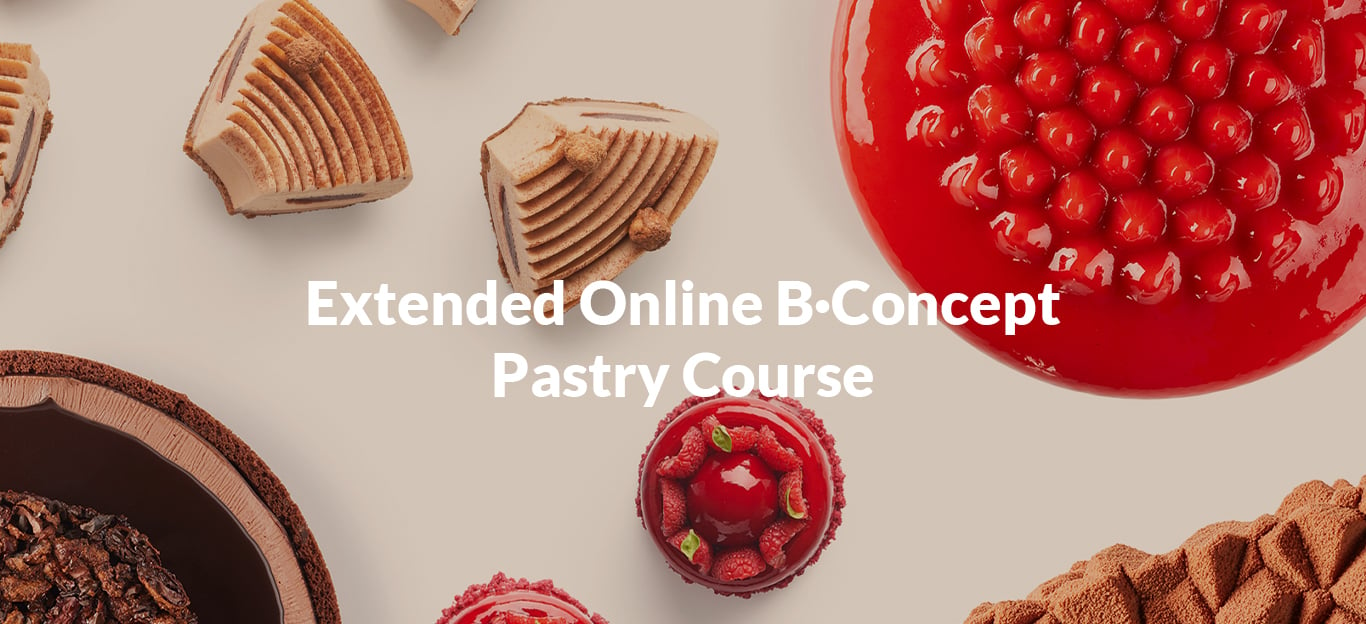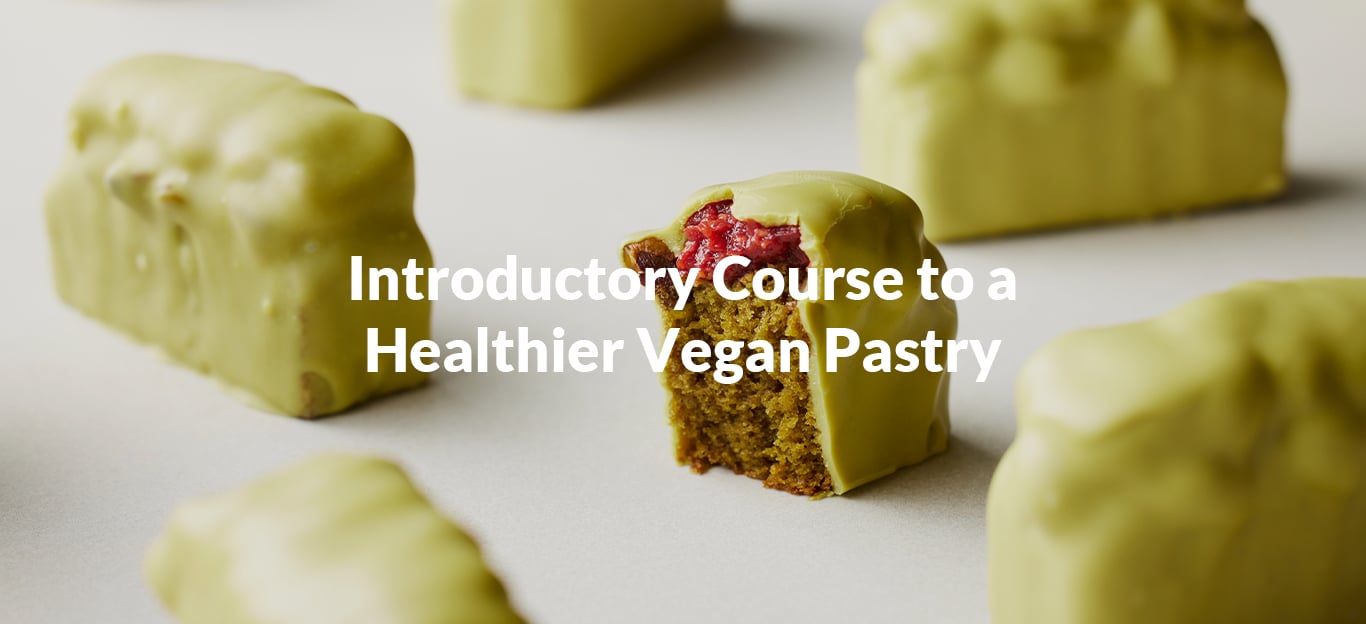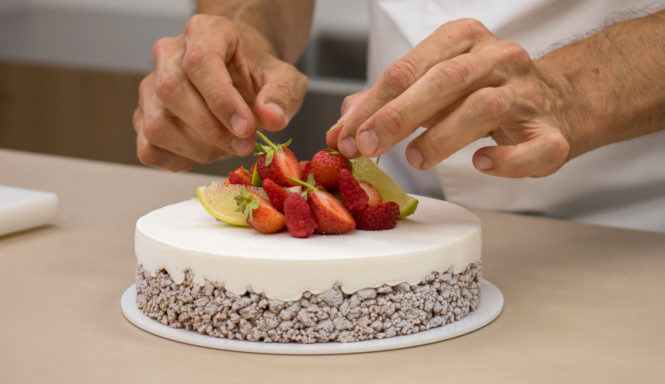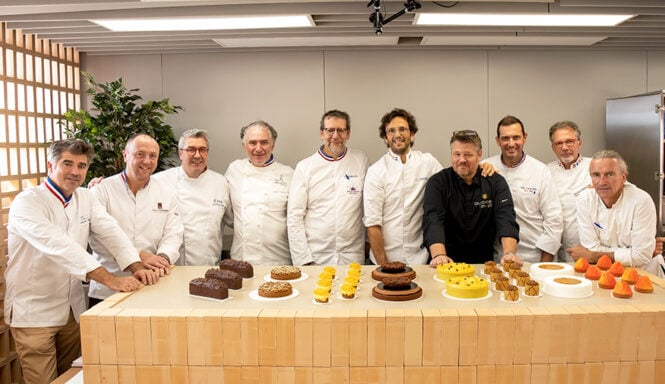
Pairing alcohol and gelling agents in pastry
Cocktails and entremets have long been friends, but do you know why it is not so easy to put alcohol in your pastry recipes? Today we share some tips on how to work with alcohol and gelling agents on the example of one of our cocktail entremets, Mojito.
Pairing alcohol and gelling agents can be tricky and it is the number one reason why some pastry preparations with alcohol do not work. Not all gelling agents are compatible with alcohol and some can only tolerate a certain amount of it, so while designing recipes with alcohol we need to be extra careful.
In our Mojito entremets we have a creamy made with rum and lime puree. The creamy is made by first gelling the puree, water and rum solution. Then, we add brown sugar with locust bean gum – in order to prevent syneresis. Eventually, we mix this preparation with coconut oil, emulsifier (Natur Emul) and mint leaves. On the other hand, you will also find the recipe for the lime and rum mousse in which we will follow the same process, but instead of coconut oil, we will add the meringue.
Gelatine is the most commonly used gelling agent in pastry, but it is worth knowing that if we aim to make a pure alcohol gelation it can only be used to make gels with alcohols that have less than 40% of alcohol content. If we want to use a stronger alcohol (like whisky or vodka) we will need to do the calculation to make sure of the total amount of alcohol in the recipe or dilute it with water, fruit pure or juice, if needed.
Among gelling agents with higher alcohol percentage tolerance, we have Gellan gum (50%) and methylcellulose (70%) while agar-agar has the same alcohol tolerance to the total amount of alcohol in the recipe as gelatine, but since it requires heating above 85ºC it is not usually recommended for alcohols as the alcohol evaporates at higher temperatures.
Pectins, especially LM pectins (Acid Free, Pectin NH) are usually not suitable for gelling alcohol solutions, although they might work with low percentage alcohol like wine (12-13% of alcohol) or recipes where the alcohol [%] is under 12%.
| Ingredient | Max. alcohol tolerance (% alcohol in the recipe) |
| LM Pectin | 12-13 % |
| Gelatin | 40 % |
| Agar-Agar | 40 % |
| Gellan gum | 50 % |
| Methylcellulose | 70 % |
Regarding the dosage of the gelling agent in recipes with alcohol, we should work with higher dosages than what we usually use in recipes without alcohol, always within the range indicated in the technical data sheet.
Another factor to consider when working with alcohol is whether or not the recipe is intended to be frozen. Alcohol has anti-freezing properties and for this reason it is not very advisable to use a large amount of alcohol in entremets or other recipes that go through the freezing and thawing process. On the other hand, this anti-freezing effect of alcohol may be desirable if a softer frozen texture is sought (as in the case of ice cream, for example).
All this is only a glimpse of the gelation theory that we explain in the Extended Online B·Concept Pastry Course, one of the 4 basic techniques that must be mastered to obtain optimal results: emulsion, gelation, aeration and thickening. This theoretical base is essential to formulate recipes from scratch since, as we have just seen with gelling agents, understanding and knowing in depth the role of each ingredient in pastry making is a must. Interesting? We encourage you to see the Syllabus Presentation of our Extended Online B·Concept Pastry Course. A course in which we intend to transmit everything we have learned in more than five years of experience, research and innovation. Meanwhile, you can see below some recipes with alcohol.
MOJITO CREAMY RECIPE
85.7 g (30%) Lime puree 10 % Ravifruit
9.8 g (5%) Gelatine mass 6/1
44.8 g (22.9%) Water
15.7 g (8%*) Añejo rum
29.3 g (15%) Brown sugar
2 g (1%) Locust bean gum Sosa
2,9 g (1.5%) Emulsifier Natur Emul Sosa (with xanthan)
29.3 g (15%) Coconut oil
2 g (1%) Fresh mint
1.2 g (0.6%) Lime zest
180 g (100%) TOTAL
- Heat the puree at 20ºC and the gelatin mass at 45ºC and mix, together with the water and the rum, with the help of a hand blender.
- Mix the brown sugar and the locust bean gum and add to the previous preparation.
- Heat the coconut oil at 35ºC, add the emulsifier and mix. Add the mint and the lime zest, mixing with the blender. Add the previous mixture little by little, emulsifying intensively with the hand blender.
- Check that temperature is at least 30ºC (if not, heat) and dose.
*If this recipe has 8% of aged rum (with an alcohol content of 40%), the final amount of alcohol in the recipe is 3.2% so we could work with any of the gelling agents of those who have spoken about; if the amount of alcohol was higher than 12-13%, we would no longer be able to work with LM pectins.
LIME AND RUM MOUSSE RECIPE
113.3 g (30%) Cream 35 % Elle&Vire
1.9 g (0.5%) Lime zest
98.2 g (26%) Lime puree 10 % Ravifruit
35.9 g (9.5%) Gelatine mass 6/1
3,8 g (1%) Carob gum Sosa
34 g (9%*) Añejo rum
45.3 g (12%) Pasteurized egg
45.3 g (12%) Sugar
340 g (100%) TOTAL
*3.6% of alcohol.
- Slightly whip the cream, add the lime zest and set aside in the fridge.
- Heat the purée at 20ºC and the gelatin mass at 45ºC and mix, together with the locust bean gum and rum, with the help of a hand blender. Let cool until it begins gelling.
- Whip the egg whites and sugar in the mixer at least for 10 minutes at medium speed.
- When the meringue is well whipped, add the previous preparation little by little with the mixer at first speed.
- Add the slightly whipped cream and finish mixing by hand gently with a spatula. Use.





